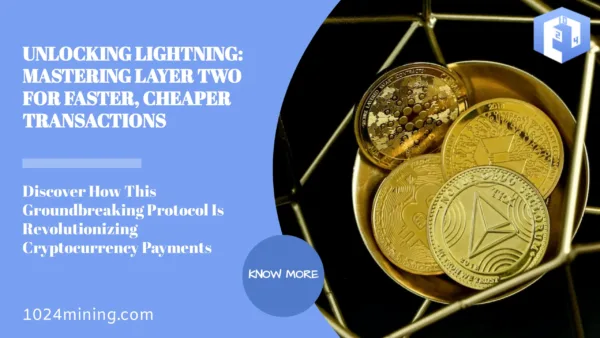比特幣第 2 層協定是一種擴展解決方案,旨在解決比特幣網路的可擴展性問題。 透過建立在比特幣區塊鏈之上,第 2 層協議可實現更快、更便宜的交易,並能夠支援更多用戶。 在本文中,我們將探討比特幣第 2 層協議的基礎知識及其潛在好處。
閃電網路
什麼是閃電網路?
- 閃電網路簡介
- 它如何作為比特幣的第 2 層協議運行
特點和優點
- 即時交易
- 費用低
- 可擴展性
- 隱私
How it Works
- Payment channels
- Routing
- Multi-hop payments
Liquid Network
What is the Liquid Network?
- Brief explanation of the Liquid Network
- 它如何作為比特幣的第 2 層協議運行
特點和優點
- Confidential transactions
- Faster settlement times
- Issued assets
- Interoperability
How it Works
- Federated sidechain
- Two-way pegging
- Confidential transactions
RSK (Rootstock)
What is RSK?
- Brief explanation of RSK
- 它如何作為比特幣的第 2 層協議運行
特點和優點
- Smart contract functionality
- Merge-mining with Bitcoin
- Increased scalability
- Interoperability
How it Works
- Merge-mining with Bitcoin
- RSK Virtual Machine (RVM)
- Two-way pegging
Summarize the importance of layer 2 protocols for Bitcoin and their potential to enhance scalability, speed, and cost-effectiveness. Mention that the Lightning Network, Liquid Network, and RSK are just a few examples of the layer 2 protocols available for Bitcoin, and there may be more developments in the future.
Layer 2 protocols are of immense importance for Bitcoin, as they can offer scalability, speed, and cost-effectiveness improvements that are not possible with the base layer of Bitcoin. These benefits are made possible through a variety of technologies, such as merge-mining with Bitcoin, the RSK Virtual Machine, and two-way pegging. The Lightning Network, Liquid Network, and RSK are just a few of the layer 2 protocols available for Bitcoin, and there are likely to be more developments in the coming years that could further increase the advantages of using Bitcoin.
The Lightning Network and Liquid Network are two of the most popular layer 2 protocols for Bitcoin, and both offer significant advantages. The Lightning Network is a Bitcoin-based payment system that utilizes a network of payment channels on top of the Bitcoin blockchain, allowing for instant and near-zero cost payments. The Liquid Network is a sidechain that is interoperable with Bitcoin, allowing users to move Bitcoin in and out of the network and allowing for faster and cheaper transactions. Both of these protocols have the potential to revolutionize the way that Bitcoin is used, and it will be exciting to see what else is developed in the future.



